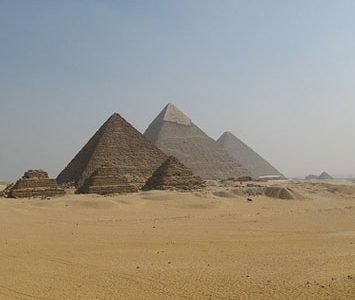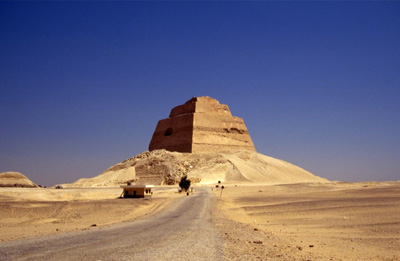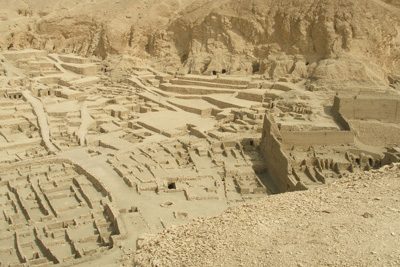 Athree day Egyptian symposium starts, in Toronto,in a matter of hours. The Scholars’ Symposium (or Scholars’ Colloquium) is curated by The Society for the Study of Egyptian Antiquities (SSEA), and brings together a stella lineup of speakers. Todays session will be at the Royal Ontario Museum, and tommorows will focus on Egypt and the Bible and willbe held on the University of Toronto campus.
Athree day Egyptian symposium starts, in Toronto,in a matter of hours. The Scholars’ Symposium (or Scholars’ Colloquium) is curated by The Society for the Study of Egyptian Antiquities (SSEA), and brings together a stella lineup of speakers. Todays session will be at the Royal Ontario Museum, and tommorows will focus on Egypt and the Bible and willbe held on the University of Toronto campus.
The temperature is hovering at around 0 degrees celcius – not exactly what you would find at Giza!
As I talked about in previous posts an update on research in the Sinai desert and at the Pyramid of Seila is part of the program. Also as Heritage Key reported an announcement will be made (on Sunday afternoon) that the husband of a famous Toronto mummy called Djedmaatesankh has been found in Chicago of course!
What other things can we look forward to? With nearly 30 papers being presented, more than I can write!
Dogs in Egypt
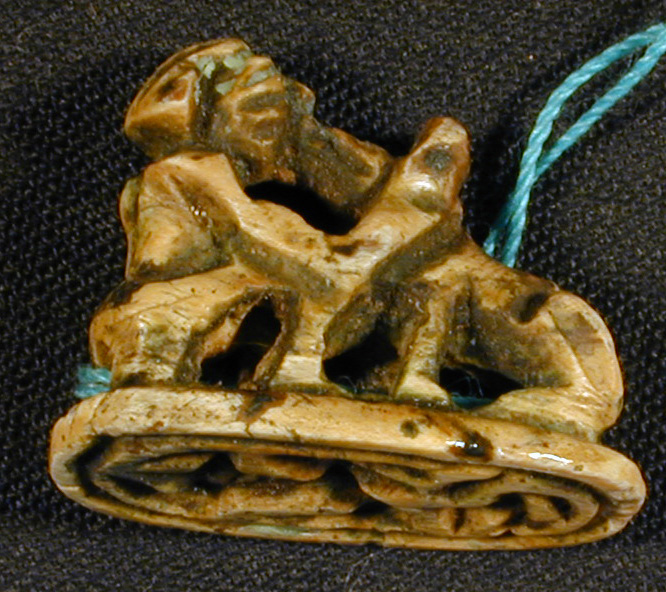 One unusual paper, which Ill be following closely, is research looking at the role of dogs in Old Kingdom Egypt (the time when the Great Pyramid was built).
One unusual paper, which Ill be following closely, is research looking at the role of dogs in Old Kingdom Egypt (the time when the Great Pyramid was built).
Yes you read it correctly dogs.
The research is being done by Beverley Miles of MacQuarie University.
The association between the ancient Egyptians and dogs is not clearly understood, despite the animals early and pervasive presence in the archaeological and cultural record.
Miles will be talking about three works of art, which date to the Old Kingdom, thatdepict humans touching the muzzle of dogs.
Now, these pictures are really unusual. Egyptian art at this time refrained from showing human to human contact, much less human to animal. Why make an exception for dogs?
Non-royal Tombs in the Age of the Pyramids
Another paper that Im going to be keeping my eyes ontoday, isresearch on Old Kingdom non-royal tombsdone by the University of Pennsylvanias John Thompson.
While the big royal necropolis sites, such as Giza, tend to be more famous, many tombs were also constructed by people who were from a non-royal background. These tombs typically have an underground burial with a structure on the surface (ie- a mastaba). It’s been widely believed that the structures are there to help the deceased into the afterlife.
That burials occur in the subterranean chambers connected to non-royal superstructures of the Old Kingdom has led some scholars to interpret the whole of the complex as funerary in its purpose, said Thompson.
Both textual and iconographic evidence suggest that the superstructures were not central to the funeral rites (except, of course, interment) and therefore should be viewed as having another primary purpose.
What could this purpose be?
Discoveries in Thebes
There are going to be two presentations discussing recent work in Thebes.
Edwin Brock, of the Theban Mapping Project, will be talking about the latest finds at the site.
“Recent large-scale engineering efforts to install a city-wide sewer system and a project to lower the ground water have revealed the presence of unknown or previously lost monuments.”
Modern day development is unveiling more of this ancient city. Brock explains recent large-scale engineering efforts to install a city-wide sewer system and a project to lower the ground water have revealed the presence of unknown or previously lost monuments, around the temple complexes of Karnak and Luxor.
He added, the eastern limits of the destroyed temple to the Aten erected by Akhenaten have been uncovered. Other recent finds outside the Karnak temple complex include the colonnade of an unknown temple of the 25th Dynasty, the gate of a temple of Khonsu from the reign of Ptolemy XII and the recovery of a Ptolemaic temple to Thoth.
The enclosure wall of a Roman camp has also been discovered recently.
In addition Lyla Brock, of the Royal Ontario Museum, will be talking about the excavation and restoration of the Tomb of Anen TT120. Anen was a brother in-law of Amenhotep III (brother of Queen Tiye). He appears to have found royal favour, gaining the title Second Priest of Amun in Thebes.The excavation and conservation work took six years and is now complete.
SSEA Scholars’ Colloquium 2009
Friday, November 6, 2009
9:15am: Rare and Enigmatic Scenes of the Human-Dog Relationship in Ancient Egyptian Art of the Old Kingdom
Beverley Miles, MacQuarie University
9:45am: The Purpose of Non-Royal Tombs in Old Kingdom Egypt: A Re-assessment
John S. Thompson, University of Pennsylvania
10:30am: Discovering and Understanding Parallel Programs at Sneferus Pyramids
Kerry Muhlestein, BYU
11:00am: Olive tree cultivation and trade in Ancient Egypt
Jose M. Alba Gmez, Jaen University, Spain
1:15pm: Hidden Thebes
Edwin C. Brock, ARCE/Theban Mapping Project
1:45pm: The Late Amarna Period on Egypts East Frontier: New Evidence
James K. Hoffmeier, Trinity International University
2:15pm: The Egyptian Love songs
Vince Tobin, Prof. Emeritus, St. Mary
3:00pm: An Investigation into the Sacred District
Kelly Diamond, Villanova University
3:30pm: The Assyrian Conquest in Disguise? A new look at the Demotic
Prof. Thomas Schneider, UBC
4:00pm: The Genesis of Ancient Egyptian Motifs in Biblical Art
Prof. Anna L. Pearman, Vincennes University
Saturday, November 7, 2009
9:15am: Of plots, women and lawgivers: Egypt as pictured in Genesis & Exodus
Prof. Donald B. Redford, Pennsylvania State University
10:30am: Abraham in Egypt
Prof. John Gee, Brigham Young University
11:00am: Exodus Geography and Location of the Re(e)d in the Light of Recent Archaeological and Geological Work in North Sinai
Prof. James K. Hoffmeier, Trinity International University
1:40pm: The Campaign of Pharaoh Sheshonq, the Bibles Shishak, to the Levant, ca. 920 B.C: Myth, Legend, or Something you can put your (hand-)pick into?
Prof. John S. Holladay, Emeritus University of Toronto
2:30pm: The Rescue of Jerusalem: The Alliance between Hebrews and Kushites
Henry T. Aubin, author of The Rescue of Jerusalem
3:15pm: Two Hymns as Praise Poems, Royal Ideology, and History in Ancient Israel and Ancient Egypt: A Comparative Reflection
Prof. Susan T. Hollis, Empire State College – State University of New York
3:45pm: Egypt And The Infant Jesus
Dr. F. Terry Miosi
4:15pm: Panel discussion
Sunday, November 8, 2009
12:15pm: Evidence for Feasting in Predynastic Egypt
Juan Castillos, Uruguayan Institute for Egyptology
12:45pm: Bat or Hathor? Whos Who?
Susan Tower Hollis, Empire State College SUNY
1:15pm: Some observations on the route to the Afterlife from late 18th Dynasty Royal tombs
Peter Robinson, SSEA/Poynton Egypt Group
1:45pm: The Book of the Dead as Canon
John Gee, BYU
2:30pm: The Last Days of Anen
Lyla Pinch Brock, ROM
3:00pm: A Family Reunion? The coffins of Djedmmatiusankh and Paankhenamun
Gayle Gibson, ROM & Stephanie Holowka, The Hospital for Sick Children
3:45pm: The Identification of ROM 910.75
Lyn Green, SSEA
4:00pm: The Father of Egyptology in Canada
Mark Trumpour, Ancient Egypt in Canada/SSEA
For full details about any of these sessions, see the SSEA website. Keep an eye on Heritage Key to learn some of the key findings from the symposium. I will be posting overviews of some of the sessions over the next few days.
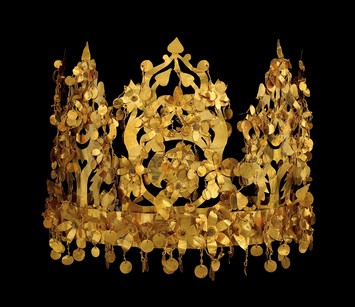 Its been nearly one month since Afghanistan: Hidden Treasures from the National Museum, Kabulwent on display in Ottawa, at the Canadian Museum of Civilization.
Its been nearly one month since Afghanistan: Hidden Treasures from the National Museum, Kabulwent on display in Ottawa, at the Canadian Museum of Civilization.
 One of the most unusual presentations on Egyptology that Ive seen in awhile took place at the
One of the most unusual presentations on Egyptology that Ive seen in awhile took place at the 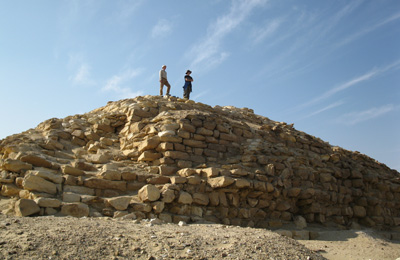 The three day Egypt symposium,
The three day Egypt symposium, 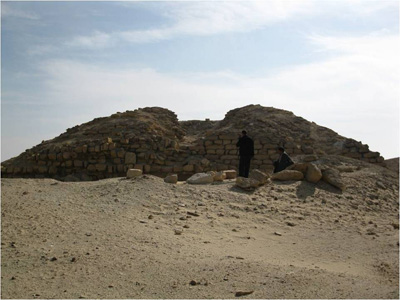 A Brigham Young team excavated the pyramid in the 1980s and 1990s. Much of their work has yet to be published. Professor Muhlestein said that they are working on getting all of it into publication as soon as possible. (Note – it is not unusual, in archaeology, for full publication of results to take many years).
A Brigham Young team excavated the pyramid in the 1980s and 1990s. Much of their work has yet to be published. Professor Muhlestein said that they are working on getting all of it into publication as soon as possible. (Note – it is not unusual, in archaeology, for full publication of results to take many years). We actually found smooth placement stones and good evidence this was a true pyramid with smooth casing that we see on Sneferus other pyramids, said Muhlestein.
We actually found smooth placement stones and good evidence this was a true pyramid with smooth casing that we see on Sneferus other pyramids, said Muhlestein. The portico itself is made up of stone and brick pavement. A libation altar and statue were found. There are no walls. This appears to have been an open area. There are holes in the portico that may have been used to hold pots on the ground.
The portico itself is made up of stone and brick pavement. A libation altar and statue were found. There are no walls. This appears to have been an open area. There are holes in the portico that may have been used to hold pots on the ground.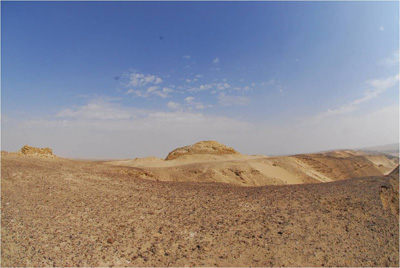 Now that we have an idea as to what all four of Snefru’s pyramids are like, Muhlestein is able to offer a comparison. He found some interesting parallels between the pyramids. These include:
Now that we have an idea as to what all four of Snefru’s pyramids are like, Muhlestein is able to offer a comparison. He found some interesting parallels between the pyramids. These include: As more information is released researchers should get a better picture of how Seila compares to the otherthree pyramids.
As more information is released researchers should get a better picture of how Seila compares to the otherthree pyramids. After 3,000 years its appears all but certain that the husband of the
After 3,000 years its appears all but certain that the husband of the 

